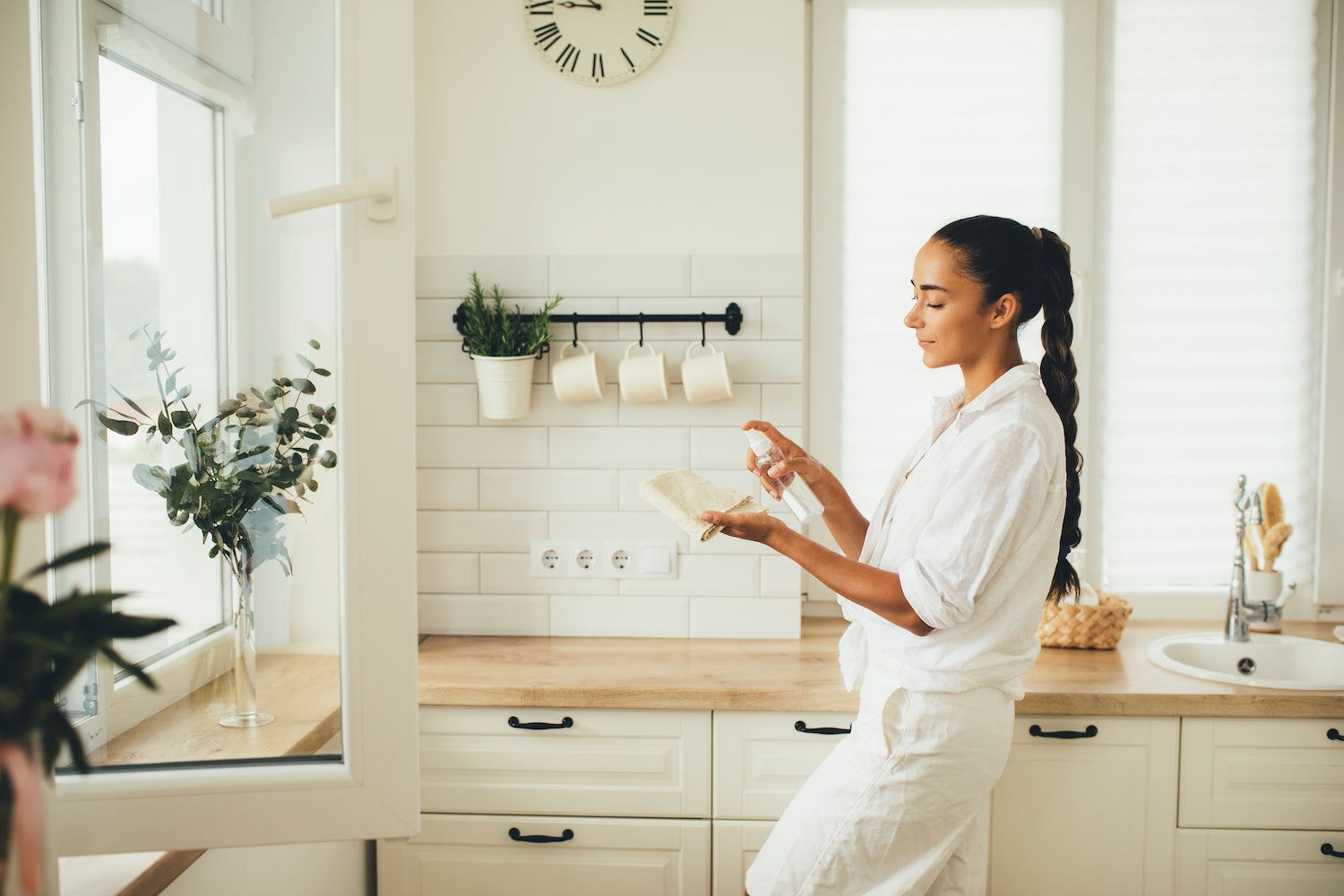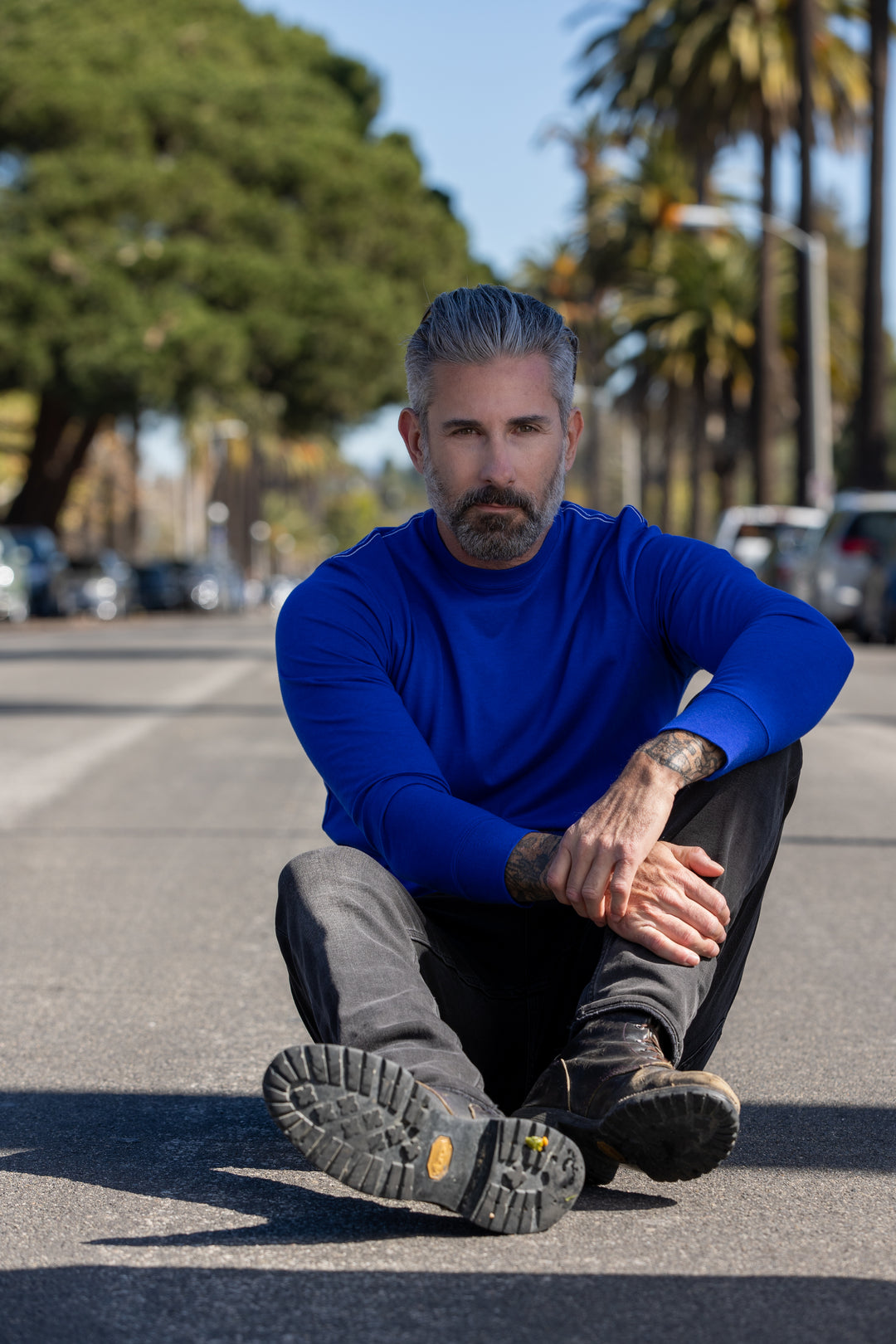"Eco-friendly" is THE buzzword of the century. Everyone wants to be more environmentally friendly, but not everyone knows where to start. It can seem intimidating and hard to know where to even begin with adopting a sustainable lifestyle. That’s why we’ve compiled a list of five simple ways you can help the planet in your daily life, one small step at a time, all from the comfort of your own home - without sacrificing comfort one bit!
Going Eco-friendly in the Living Room...
- Choose LED bulbs
- Use more natural light where possible
LED light bulbs are all the way to go when it comes to lighting up your living room. Whether you choose to have a ceiling lamp, a hanging pendant lamp, or a standing lamp next to your couch, you can always opt for LED options.
LED bulbs are better than conventional incandescent bulbs because they convert 95% of the energy into light and only 5% into heat, thus using less power to keep your home lit. These energy-efficient bulbs also last a lot longer and don't need to be changed as frequently, reducing the number of bulbs that end up in a landfill.
On top of swapping out your light bulbs, you can also try to open your curtains and let as much natural light into your home as possible. Not only will this help reduce the need for turning on your lights, but you'll also benefit from the sunshine, which helps keep depression at bay.
Going Eco-friendly in the Dining Room...
- Eat less meat
- Eat locally and seasonally
- Don’t waste food - reuse leftovers creatively
Food is a big subject of controversy when it comes to sustainable living because there is a huge misconception that you have to go completely vegan in order to make any substantial change. In this BBC article, Sustainably Vegan blogger and YouTuber Immy Lucas says that "the more realistic thing is for the majority of people [to cut] down meat consumption to a couple of days a week," and to eat as locally and seasonally as possible.
"If you're eating soy beans that are shipped from China or bananas that have been shipped from Colombia, that's not as sustainable as if you're eating apples [that are locally grown]. If you support your local farmers' market, you're also supporting more low-scale food agriculture which tends to be more kind to the Earth."
Buying local produce not only reduces the airmiles associated with bringing your food here to your country, but it also helps give the local economy a much-needed boost.
This article says that even skipping red meat for two or three days a week "can have quite a significant impact on reducing your carbon footprint."
This is because animal agriculture is actually one of the biggest contributors to greenhouse gas emissions, so making even such a small change as meat-free Mondays and Fridays, for example, can create real change for the planet.
If you're not able to shop in a farmer's market, you can make better choices in a supermarket as well. For example, you can buy 'loose' fruits and veggies by weight instead of in a pack, and opt for recyclable or biodegradable packaging over plastic packaging. If you have a good tin can and cardboard recycling program in your neighborhood, by all means take advantage of those, and keep that in mind when doing your grocery shopping as well, knowing that what you buy won't end up further polluting the earth.
Finally, learning to creatively use leftovers means less food waste gets added to the earth's trash. For example, you can repurpose yesterday's potatoes into today's hashbrowns, or give leftover tomato sauce new life as the beginning of a great minestrone. There is no end to the creative ideas available for using leftovers, so get googling and pick up new leftover recipes your family will come to love!
Going Eco-friendly in the Bathroom...
- Choose products with natural and biodegradable ingredients
- Buy products that come in reusable containers
- Buy bamboo toothbrushes
A lot of the products that we use on our body and hair might actually contain harmful chemicals that are often toxin in nature and end up hurting biodiversity when they get flushed out with our shower water.
Thankfully the beauty industry is catching up on green living and you can now easily purchase soap bars, shampoo bars, and conditioner bars that are made from natural, biodegradable ingredients.
Not only are these eco-friendly alternatives a lot healthier for your skin and the marine animals that survive in our waters, but using such toiletries in bar form instead of in liquid form is also a really simple way to cut down our use of plastic bottles.
Some body scrubs or shower gels also contain microbeads which are basically minute pieces of plastic, and these will end up in the ocean eventually - and in the mouth of another poor sea turtle in yet another PSA reminding us to cut down on plastic waste. Reading the labels on the products you buy means you can make better choices like buying natural scrubs, or even making your own sugar scrubs from home - it can be as simple as with two ingredients!
Since you're supposed to toss out your toothbrushes every 12 to 16 weeks, or 3 to 4 months, you can imagine that's a whole lot of plastic just piling up in the middle of nowhere. Conventional toothbrushes are made of plastics that cannot be recycled, which means that your toothbrushes will outlive you for another 300+ years and then some.
Thankfully you can easily switch to a bamboo toothbrush for a more sustainable option. Bamboo is an eco-friendly natural plant that grows quickly, doesn't require any pesticides, can be easily recycled into other products, and is natural enough to fully biodegrade on its own. (Plus, it's apparently also more hygienic!)
Going Eco-friendly in the Kitchen...

- Use cleaning products with environmentally friendly natural ingredients
- Opt for refillable where possible
- Reduce waste - use reusable silicone bags
Just like with our toiletries, a lot of cleaning products we use in the kitchen are also not as eco-friendly as we think. The toxic chemicals in detergents, dish wash, cleaning sprays and such will end up causing damage to our planet and its biodiversity.
The best thing you can do is to be mindful to only purchase eco-friendly cleaning products from companies that use natural ingredients that are not harmful to the environment. You can imagine that your hands will also thank you for using chemical-free, natural cleaning products!
Where possible, try and purchase refillable products. Many eco-friendly cleaning products come now in a refillable format, such as cleaning concentrate, compressed tabs or small powder packs, which you simply combine with water to create a new bottle of cleaning liquid.
You can also drastically reduce plastic waste by installing a water filter in your home instead of having to lug heavy bottled water back from the supermarket. Think of how much the environment - and your muscles - will appreciate this one simple change!
Swapping paper towels for cotton or bamboo towels that you can simply toss into your usual laundry also means a huge difference in terms of how much waste you create just in one household alone.
Investing in reusable silicone bags is also a great way to reduce the number of single-use plastic bags you end up disposing of. Silicone bags can be used in the fridge, freezer, and can even withstand microwave thawing. They're also super easy to wash - just prop them up in your dishwasher. Sometimes we might shy away from making any changes thinking it's going to make our lives more inconvenient, but when it's something as simple and easy as tossing it in your dishwasher, it makes it a lot easier to adopt these lifestyle changes for good.
Going Eco-friendly in the Wardrobe...

- Shop second-hand clothes
- Go for sustainable fabrics like bamboo viscose
- Upcycle and recycle your old rags
The fashion industry is one of the main polluting industries in the world. Thankfully we can all do our part to lessen the impact this industry has on the planet.
The idea behind a sustainable wardrobe is simple: Invest in good quality items that last a long time, give them a second life, and just prevent them from ending up in a landfill as much as possible.
Purchasing classic pieces that will always remain in style is one good way to ensure these clothes will stay in your closet for a long time and not just until the trend fades.
Choosing to shop in second-hand and vintage shops, and donating your unwanted clothes to charity shops means that every piece of clothing will get to "live" on and avoid being thrown away.
You can also give your clothes a second life by repurposing them - turning a dress into a top and skirt, turning old jeans into shorts, or a denim bag; or if they're really not usable as clothes anymore, dropping them off in a bin for textile recycling.
The best way to shop is to say "No" to impulse buying just because clothes are cheap, and "Yes" to clothes that you have absolutely fallen in love with, because it means you'll love them for a long time.
You can also opt for more sustainable fabrics and natural fibers such as bamboo viscose, organic cotton or recycled fibers, and support environmentally conscious companies that take great care to reduce environmental damage in their production process, unlike many fast fashion companies today.
This is exactly why Spun Bamboo exists - to offer eco conscious individuals everywhere a more environmentally-friendly fashion option using highly sustainable bamboo viscose fiber. Bamboo being such a quickly renewable natural source, it allows us to produce beautiful and versatile sustainable clothing such as T-shirts, hoodies, and socks, without contributing to the earth’s current pollution and waste problems.
It’s time to say goodbye to the myth that eco-textiles are expensive, inaccessible, or uncomfortable. Our bamboo viscose clothing for both men and women is super soft on the skin, incredibly affordable, and we ship worldwide! You can consciously make a change right now by choosing ethical fashion, even if it’s just the first step towards a more sustainable lifestyle.
Going Eco-friendly At Home...
We've listed five major areas in which you can make tiny, bitty changes towards leading a more eco-friendly life. Most of them aren't complicated, and just involve conscious habits to support sustainability.
Of course, nobody is saying that you have to make all these changes in your life right now! What's more important is that you're sustainably conscious. It doesn't take huge sacrifices. You don't have to give up luxury or comfort. Remember, small steps in your everyday life can make a huge difference. So start small and start living a more eco conscious lifestyle today!












